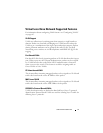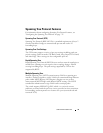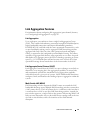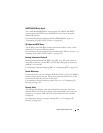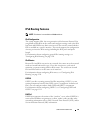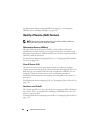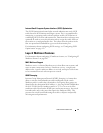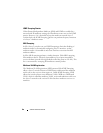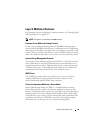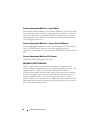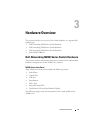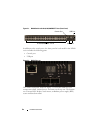
Switch Feature Overview 85
IPv6 Routing Features
IPv6 Configuration
The switch supports IPv6, the next generation of the Internet Protocol. You
can globally enable IPv6 on the switch and configure settings such as the IPv6
hop limit and ICMPv6 rate limit error interval. You can also control whether
IPv6 is enabled on a specific interface. The switch supports the configuration
of many per-interface IPv6 settings including the IPv6 prefix and prefix
length.
For information about configuring general IPv6 routing settings, see
"Configuring IPv6 Routing" on page 1241.
IPv6 Routes
Because IPv4 and IPv6 can coexist on a network, the router on such a network
needs to forward both traffic types. Given this coexistence, each switch
maintains a separate routing table for IPv6 routes. The switch can forward
IPv4 and IPv6 traffic over the same set of interfaces.
For information about configuring IPv6 routes, see "Configuring IPv6
Routing" on page 1241.
OSPFv3
OSPFv3 provides a routing protocol for IPv6 networking. OSPFv3 is a new
routing component based on the OSPF version 2 component. In dual stack
IPv6, you can configure and use both OSPF and OSPFv3 components.
For information about configuring OSPFv3, see "Configuring OSPF and
OSPFv3" on page 1111.
DHCPv6
DHCPv6 incorporates the notion of the “stateless” server, where DHCPv6 is
not used for IP address assignment to a client, rather it only provides other
networking information such as DNS, Network Time Protocol (NTP), and/or
Session Initiation Protocol (SIP) information.
NOTE: This feature is not available on N2000 switches.



